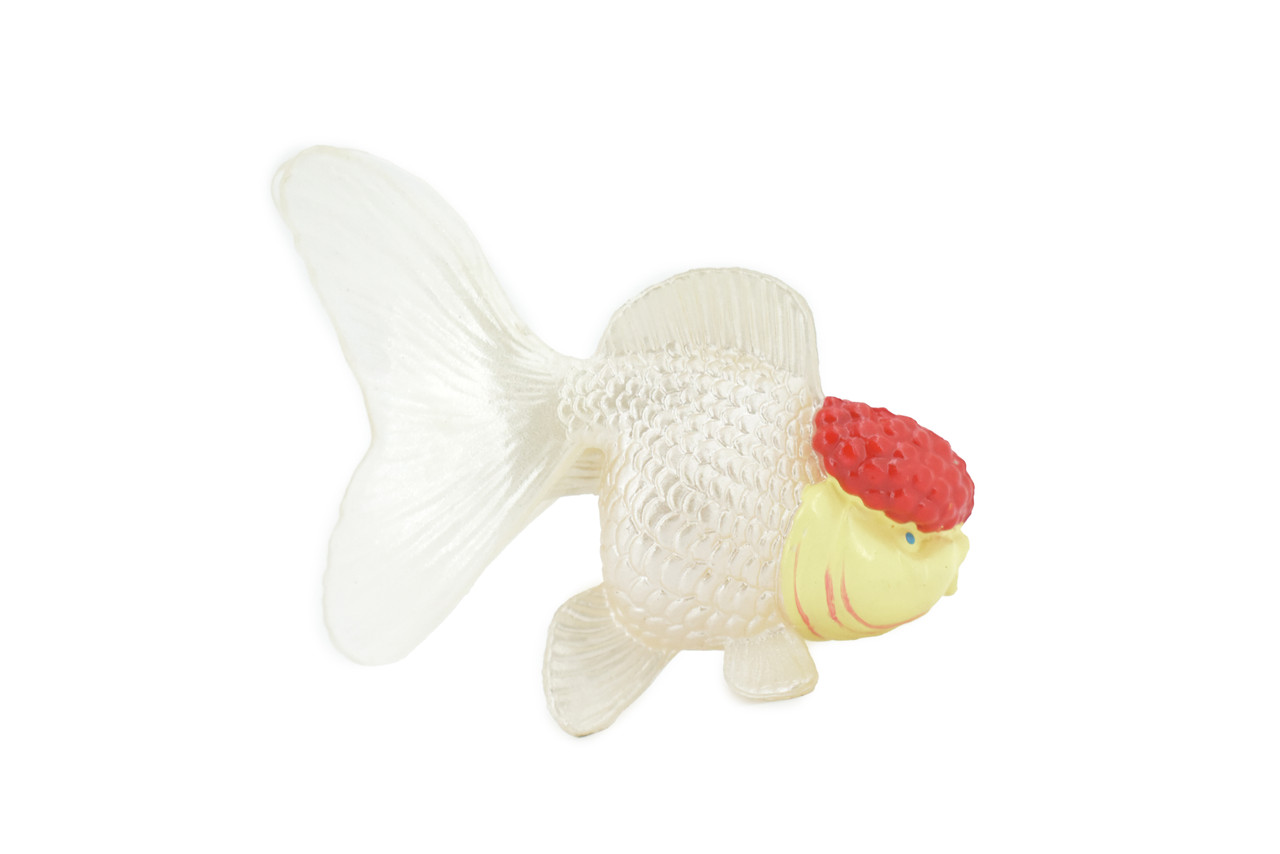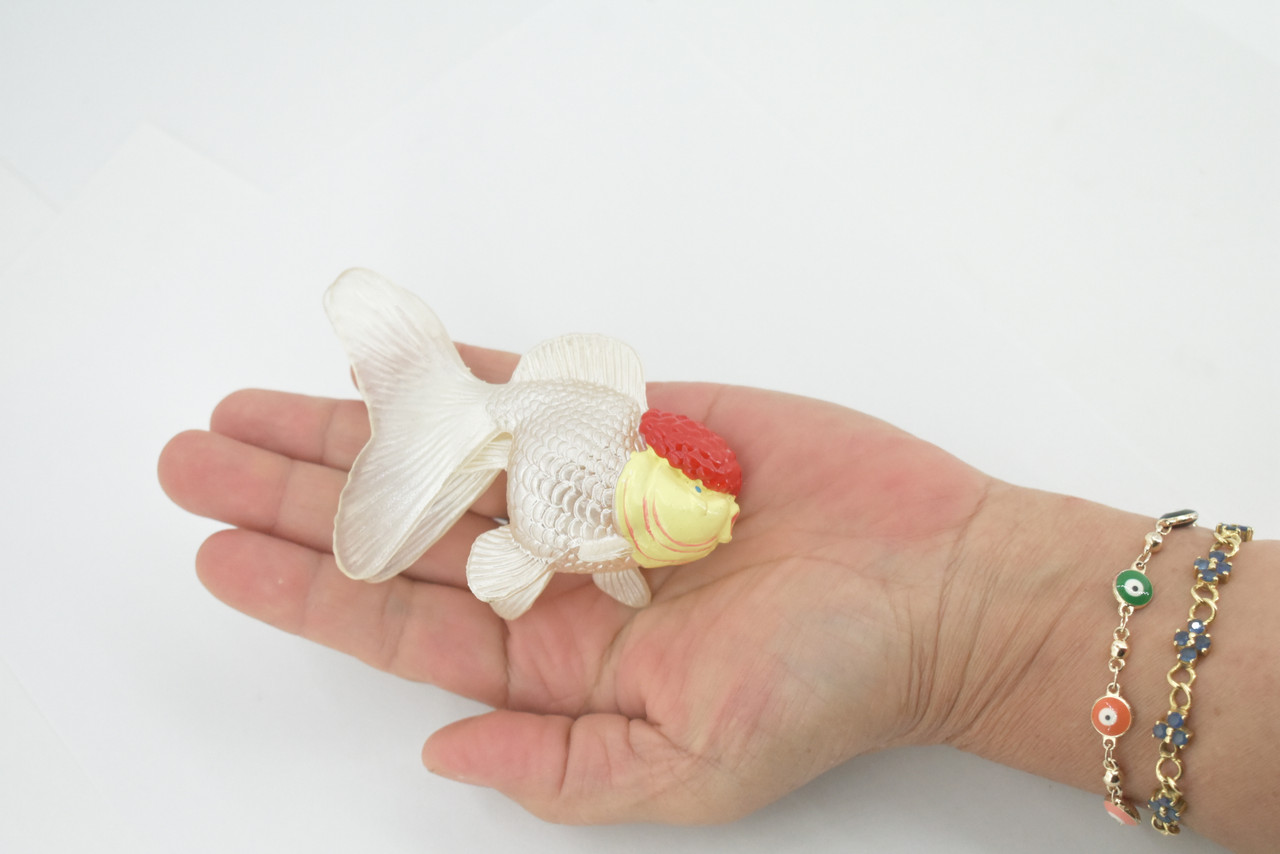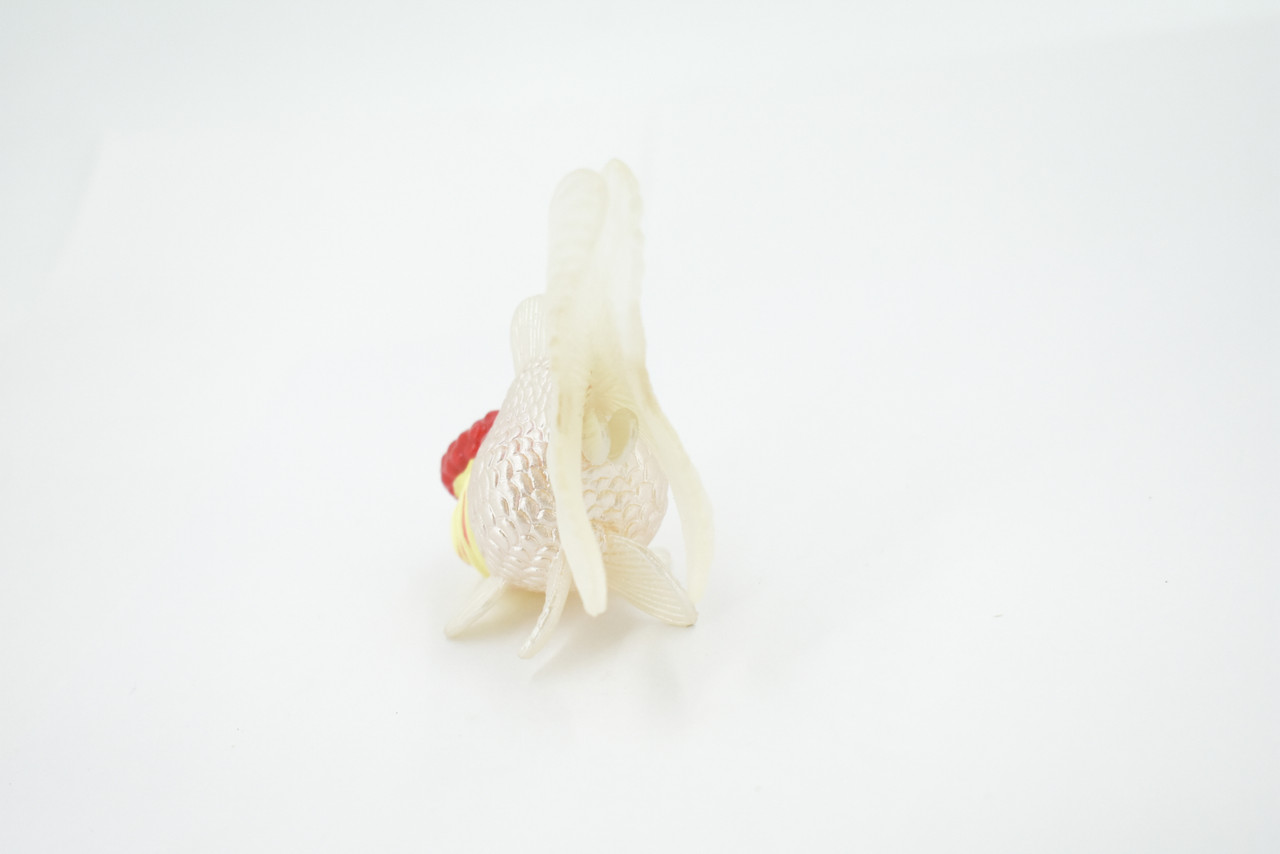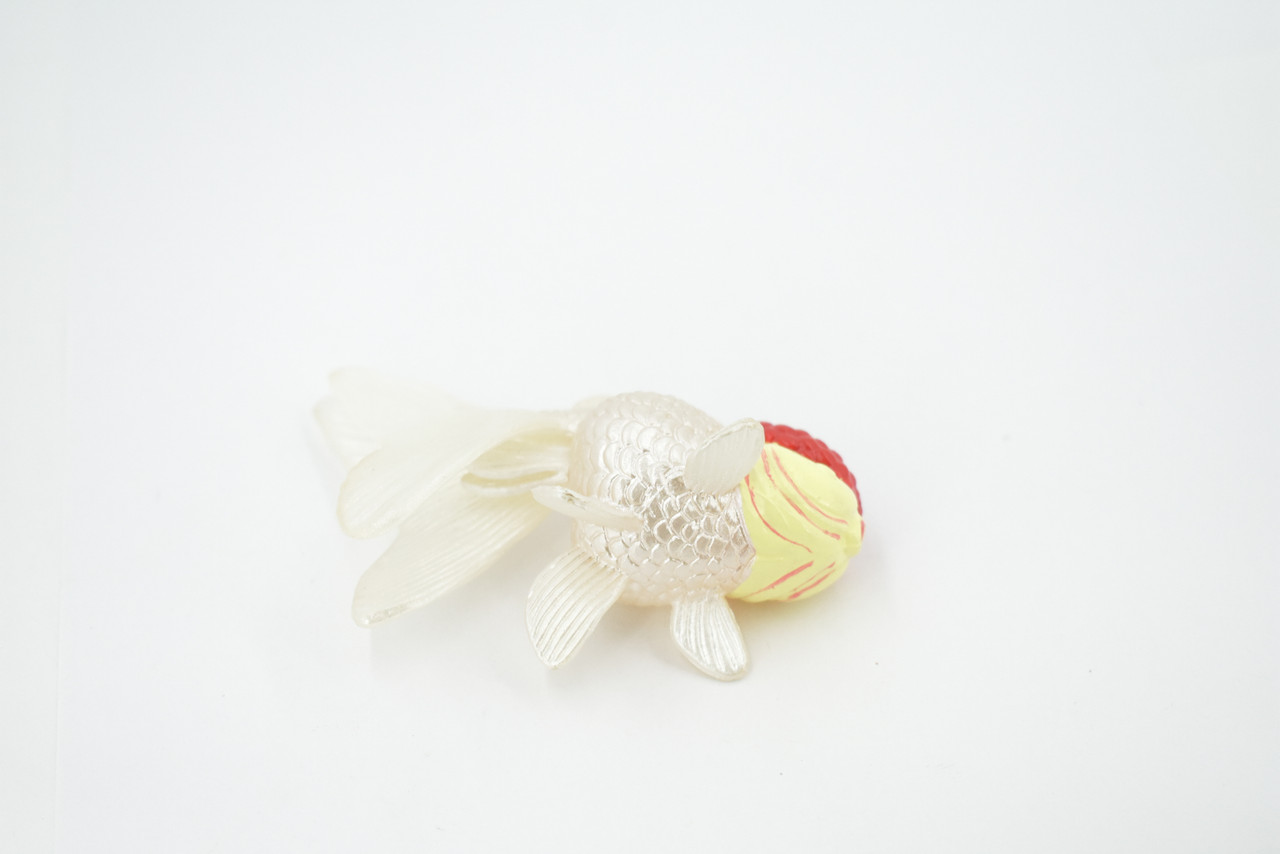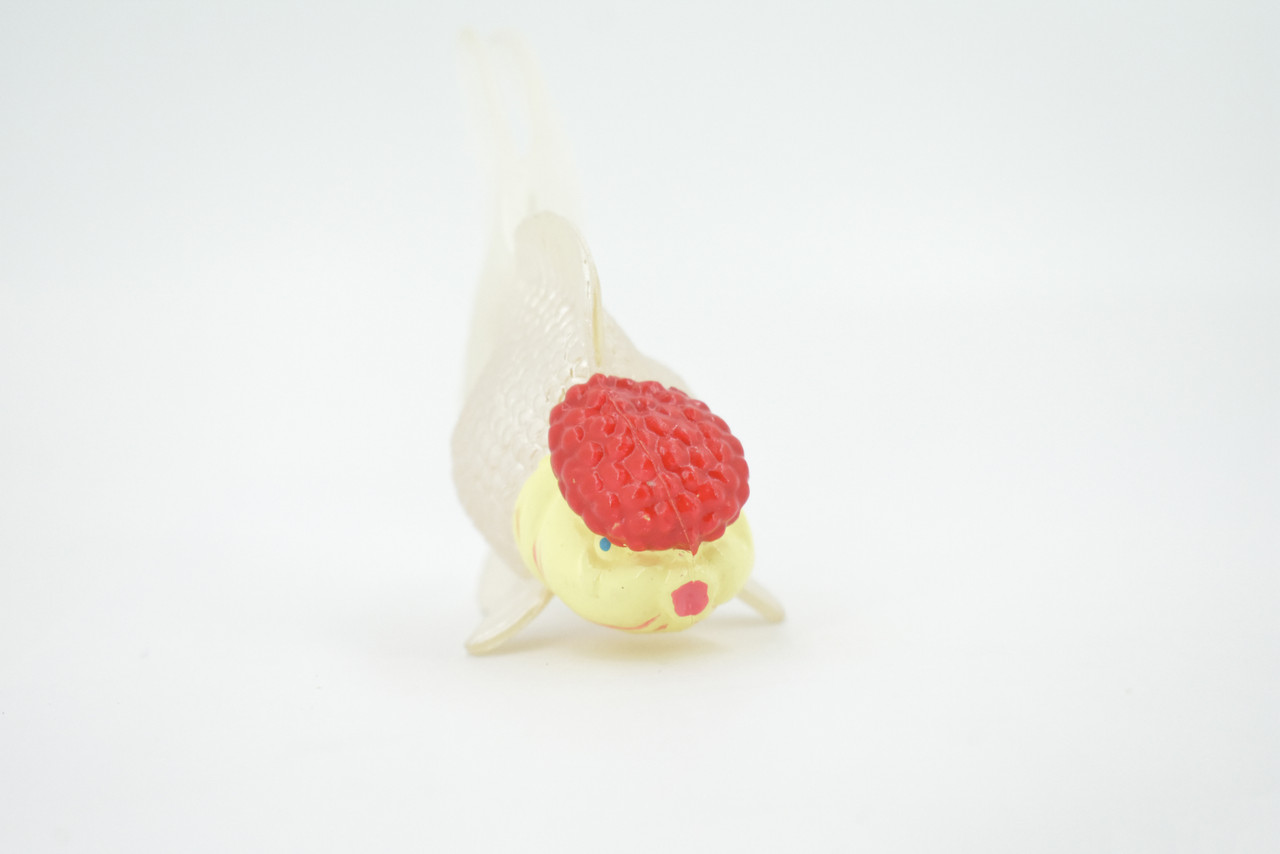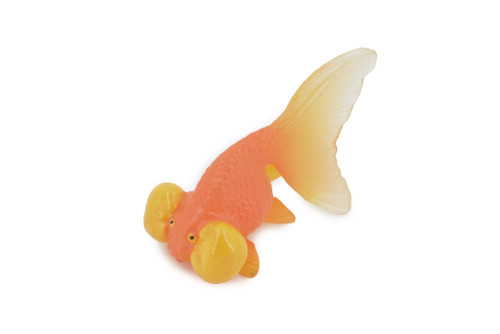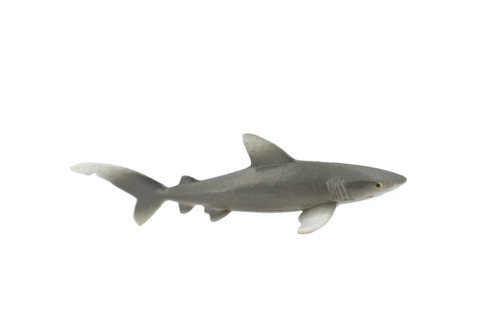Product Description
This Goldfish 4" figure includes hand painted features to give it realistic details that are true to natural anatomy. This figure is considered a museum quality replica. Highest Quality Natural Rubber.
Oranda Goldfish was first developed in 1590 when the Red cap Oranda goldfish first appeared and is one of the few fancy Goldfish types that are equally appreciated by eastern and western goldfish keepers. head goldfish are a much newer form of goldfish and was created 1893. Oranda goldfish seldom live up to the standard and high quality Oranda goldfish. The name Oranda derives from a case of mistaken identity. When this Chinese fish was brought to Japan, it was mistakenly believed to have come from the Netherlands. The name Oranda is derived from the Japanese for “Dutch Iron Mask.” These Fancy Goldfish can grow up to as large as 12 inches, although 8-10 inches is more common. Like the other “rounder” breeds of Fancy Goldfish, the preferred body dimension is that the body depth be ⅔ of the body length.
An Oranda Fancy Goldfish with a well developed wen or crown at-2-08-04-pmThe defining feature of this Fancy Goldfish is its wen (or crown), which is a benign growth from selective breeding. The Oranda is thought to be the first fancy goldfish to sport the wen. A traditional Oranda wen should be restricted to the top of the head. Its wen can extend down off the top of the head, but should not be as extensive as a Lionhead goldfish (which covers the cheeks and gill plates). The wen resembles a raspberry and looks like a brain on the outside of their head. It can become quite large as the Oranda grows and can sometimes impede eyesight as well as its ability to swim. The wen starts to grow at around 3-4 months and is fully developed at around 2 years old. Unlike some of the other hooded goldfish, the wen is prominent on the top part of the head. Although seemingly obtrusive, the growth is benign and the reason for this particular breed’s popularity. The wen is also susceptible to bacteria, so special attention must be paid to it to ensure that a bacterial infection does not set in. It is a good idea to limit any decorative features in the tank (or at least remove anything with sharp edges) to minimize the likelihood of introducing bacteria to the wen. Additionally, for the wen to fully develop, the Oranda must receive proper care, that includes clean water within the correct parameters, good filtration and a good diet. Ideally, the wen should be well-developed but not overdeveloped. An overdeveloped wen can lead to issues with vision as well as breathing.
Thanks for visiting Collectible Wildlife Gifts, the leading provider of high-quality, lifelike animal Designs and gifts! We work hard to ensure we have a diverse range of products. Each product is inspected for their quality craftsmanship. Whether you're searching for a great gift or seeking educational designs for displays, we’ve got you covered.
At Collectible Wildlife Gifts, our products appeal to a wide range of customers, including family, friends, and educators. Our products are trusted and used by professional organizations as well including aquariums, zoos, and movie studios.
Our extensive line of products boasts everything from plush sharks to educational animal growth cycles. Our products bring joy to recipients, and serve as valuable educational resources, sparking curiosity and fostering learning.
Discover the wonders of the natural world with Collectible Wildlife Gifts. Browse our collection today!

